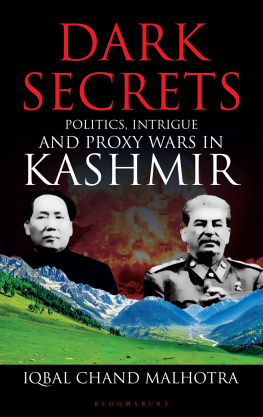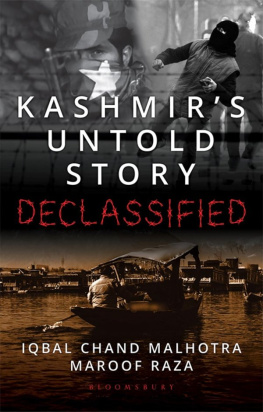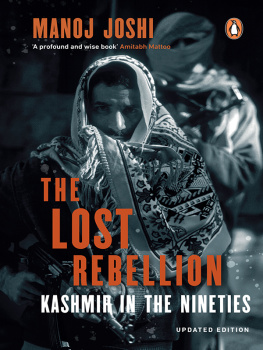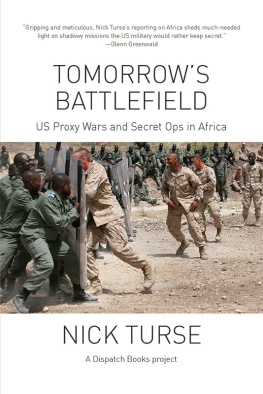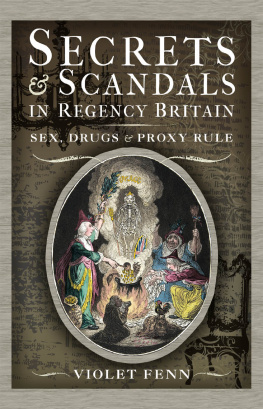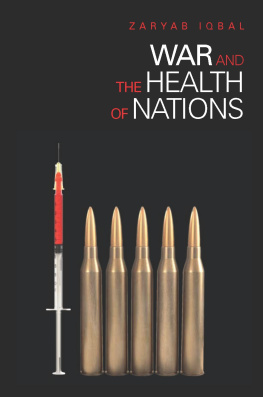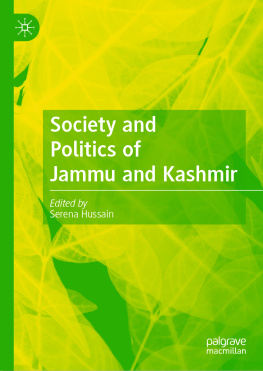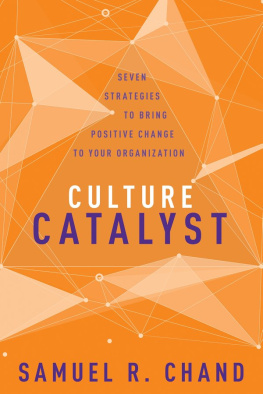In his book Dark Secrets, Iqbal Chand Malhotra has revealed the unknown interplay of forces in the great game. A strategist would learn from here, the chessboard setting for the future, with special reference to India. One thing that catches my attention is how the buffer players cause subtle interference and create new claims altering the contour of maps.
Lieutenant General P.J.S. Pannu PVSM, AVSM, VSM,
former Deputy Chief IDS,
former 14 Corps Commander (Ladakh),
former DG Infantry Indian Army
A gripping and action-packed account of Kashmir at the centre of the great game between Britain and Russia from the end of the 19th century to 1948. Iqbal has used literary license to plug gaps left by missing records to write a work of creative non-fiction which makes for a compelling read. The great game was initiated through diplomatic intrigues in Kashgar. For a time, to the utter consternation of the British, the better resourced Russians nearly reached south towards Gilgit, but the competition was resolved in the old fashioned way through the intercession of the two monarchsQueen Victoria, who was the grandmother of the Russian Tsar. The result was the Anglo Russian Convention of 1907. Consequently, the British seized control of Gilgit, Nagar and Hunza, and built roads through these territories. Iqbal gives a detailed account of how the British manipulated royal succession in Kashmir and severely circumscribed the powers of Maharaja Pratap Singh and his successor Maharaja Hari Singh. He traces the growth of popular movements in Kashmir in the 1930s including the secular-communal divide between Sheikh Abdullah and the Mirwaiz. Iqbal avers that Mountbatten and British military leaders manipulated Nehru into making decisions that led to a stalemate in Kashmir in 1948. The reasonand this is the central thesis of the bookwas the British interest in spying on the Soviet nuclear programme from top-secret bases in Kashmir, Punjab and NWFP after the Americans denied them access to the results and secrets of the US nuclear programme. This thesis and some interesting subplots in the narrative will no doubt stoke controversy, for example, Bose, writes Iqbal, did not die in the plane crash in Taipei but escaped to Russia and tried to re-enter India from the NWFP. All in all, a compelling read!
Biren Nanda, former Ambassador to Indonesia and ASEAN,
former High Commissioner to Australia
Iqbal Chand Malhotras book takes us on an exciting exploration of the secret world that shaped Indias north-western frontier and Kashmir. It examines the contours of the last great game between Imperial Russia and Great Britain during the 19th and early 20th centuries. Significantly, it points out how the Soviet control of Sinkiang influenced not only the politics of the British, but ultimately, impacted the partition of India and the Sino-Indian relationship up to the present. Well-researched, with new material to support his fluent narrative, the imaginative re-reading of certain facts lends new depth and understanding to our study of the geopolitics and history of that region.
Professor Dr Ravni Thakur,
Head of Department, East Asian Studies,
University of Delhi
DARK SECRETS
DARK SECRETS
Politics, Intrigue and Proxy Wars in Kashmir
Iqbal Chand Malhotra
BLOOMSBURY INDIA
Bloomsbury Publishing India Pvt. Ltd
Second Floor, LSC Building No. 4, DDA Complex, Pocket C 6 & 7,
Vasant Kunj, New Delhi, 110070
BLOOMSBURY, BLOOMSBURY INDIA and the Diana logo
are trademarks of Bloomsbury Publishing Plc
First published in India 2021
This edition published 2021
Copyright Iqbal Chand Malhotra, 2021
Illustrations AIM Television Archives
Iqbal Chand Malhotra has asserted his right under the Indian Copyright Act to be identified as the Author of this work
All rights reserved. No part of this publication may be reproduced or transmitted in any form or by any means, electronic or mechanical, including photocopying, recording or any information storage or retrieval system, without the prior permission in writing from the publishers
This book is solely the responsibility of the author and the publisher has had no role in the creation of the content and does not have responsibility for anything defamatory or libellous or objectionable
Bloomsbury Publishing Plc does not have any control over, or responsibility for, any third-party websites referred to or in this book. All internet addresses given in this book were correct at the time of going to press. The author and publisher regret any inconvenience caused if addresses have changed or sites have ceased to exist, but can accept no responsibility for any such changes
ISBN: PB: 978-93-54355-44-8; eBook: 978-93-54355-45-5
Created by Manipal Digital
To find out more about our authors and books visit www.bloomsbury.com and sign up for our newsletters
CONTENTS
| I.1 | Sketch map of Maharaja Hari Singhs kingdom of Jammu and Kashmir |
| I.2 | Indicative map of north-west frontier of British India |
| I.3 | Flying distance from Rawalpindi to Khojand (Leninabad) |
| I.4 | Flying distance from Rawalpindi to Semey (Semipalatinsk) |
| I.5 | Road and rail network for transhipment of uranium ore from Aksai Chin to Khojand (Leninabad) |
| 1.1 | Sir Francis Younghusband, 1905 |
| 1.2 | Maharaja Ranbir Singh of Jammu and Kashmir |
| 1.3 | Captain Bronislav Grombchevsky of the Imperial Russian Army |
| 1.4 | The Baltit Fort in Hunza |
| 1.5 | Maharaja Pratap Singh of Jammu and Kashmir |
| 1.6 | Colonel Algernon Durand |
| 1.7 | A trooper from Colonel Ionovs Cossack Cavalry |
| 1.8 | Indian Army Field Artillery led by elephants in the Pamirs in the 1880s |
| 1.9 | British troops fighting with tribals in Chitral, 1895 |
| 1.10 | National Military Memorial, Bengaluru, to honour those who lost their lives in NWFP in 1915 |
| 2.1 | Major General Wilfrid Malleson of the Indian Army |
| 2.2 | CPI co-founder Abani Mukherjee |
| 2.3 | CPI co-founder M.N. Roy |
| 2.4 | Sheikh Abdullah (third from left) with other leaders of the agitation of 1931 |
| 2.5 | (LR) Sardar Vallabhbhai Patel, Bakshi Ghulam Mohammed and Sheikh Abdullah |
| 3.1 | Vladimir Lenin (left) and M.N. Roy (centre) with other delegates at the Second Congress of the Comintern in Moscow |
| 3.2 | A.C.N. Nambiar |
| 3.3 | Virendranath Chattopadhyay |
| 3.4 | (LR) A.C.N. Nambiar, an unknown lady, Subhas Chandra Bose, Boses nephew and Emilie Schenkel |
| 3.5 | SS officer and Indologist Walter Wust |
| 4.1 | Major William Brown, Indian Army |
| 4.2 | Sir Claude Auchinleck as Commander-in-Chief of the Indian Army |
| 4.3 | Commander Eric Welsh in a meeting with Samuel Gouldsmith, Fred Wardenburg and Rupert Cecil |
| 4.4 | Commander Eric Welsh (centre) at German experimental nuclear pile in Haigerloch |
| 4.5 | Handley Page Halifax B III bomber showing the later rectangular fins and Bristol Hercules radial engines |
| 4.6 | Side profile of a converted Halifax bomber |
| 4.7 | RAF aircrew in summer uniform in NWFP |
| 4.8 | |
Next page
